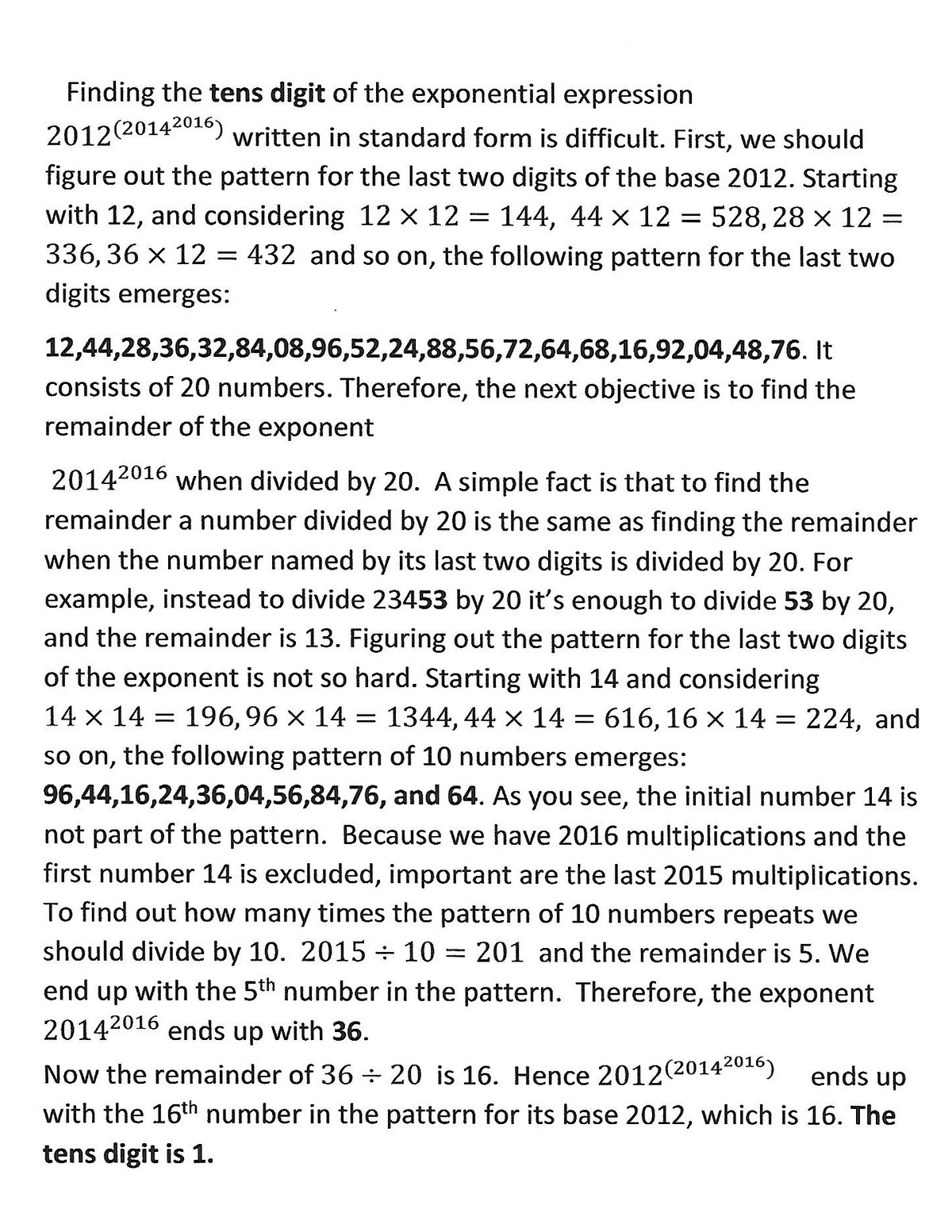This section requires Javascript.
You are seeing this because something didn't load right. We suggest you, (a) try
refreshing the page, (b) enabling javascript if it is disabled on your browser and,
finally, (c)
loading the
non-javascript version of this page
. We're sorry about the hassle.

Let N = 2 0 1 2 2 0 1 4 2 0 1 6 . We need to find ⌊ N m o d 1 0 0 ÷ 1 0 ⌋ . Since g cd ( 2 0 1 2 , 1 0 ) = 1 , we have to consider the factors of 100, that is 4 and 25 separately using Chinese remainder theorem (CRT) .
Factor 4 : N ≡ 0 (mod 4) .
Factor 25 :
N ≡ ( 2 0 0 0 + 1 2 ) 2 0 1 4 2 0 1 6 (mod 25) ≡ 1 2 2 0 1 4 2 0 1 6 m o d ϕ ( 2 5 ) (mod 25) ≡ 1 2 2 0 1 4 2 0 1 6 m o d 2 0 (mod 25) ≡ 1 2 1 4 2 0 1 6 m o d 2 0 (mod 25) ≡ 1 2 1 6 (mod 25) ≡ ( 1 0 + 2 ) 1 5 ( 1 2 ) (mod 25) ≡ 2 1 0 ( 2 5 ) ( 1 2 ) (mod 25) ≡ 2 4 ( 7 ) ( 1 2 ) (mod 25) ≡ ( − 1 ) ( 7 ) ( 1 2 ) (mod 25) ≡ − 8 4 ≡ − 9 ≡ 1 6 (mod 25) Since g cd ( 1 2 , 2 5 ) = 1 , Euler’s theorem applies. Euler’s totient function ϕ ( 2 5 ) = 2 0 Since g cd ( 1 4 , 2 0 ) = 1 , applies CRT. See note.
This implies that N ≡ 2 5 n + 1 6 ≡ 0 (mod 4) , where n s an integer, ⟹ n = 0 and N ≡ 1 6 (mod 100) and the tens digit of N is 1 .
Note: Let M = 1 4 2 0 1 6 and we need to find M m o d 2 0 using CRT. We note that M = 1 4 2 0 1 6 ≡ 0 (mod 4) and M = 1 4 2 0 1 6 ≡ 4 2 0 1 6 ≡ 4 2 0 1 6 m o d ϕ ( 5 ) ≡ 4 2 0 1 6 m o d 4 ≡ 4 0 ≡ 1 (mod 5) . Then M ≡ 5 m + 1 ≡ 0 (mod 4) ⟹ m ≡ 3 and M ≡ 1 6 (mod 20) .